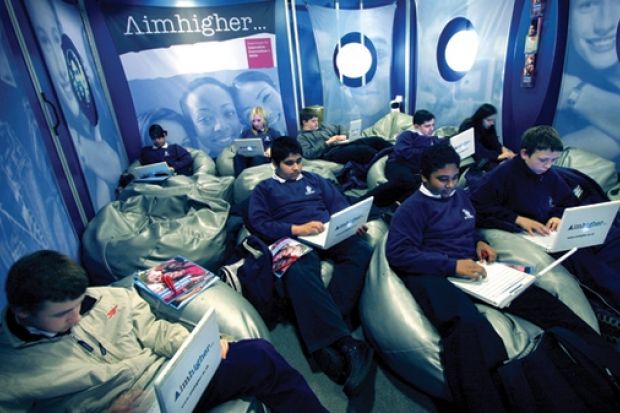Universities must avoid "photo-opportunity outreach" and focus instead on encouraging undergraduates to mentor children from poorer backgrounds, a conference has heard.
Jo Wiggans, director of Aimhigher Greater Manchester, made the case at an event held at the School of Oriental and African Studies last week to discuss the future of widening-participation programmes.
Outreach work by Aimhigher's 42 regional partnerships will finish at the end of this month.
David Willetts, the universities and science minister, announced in December that the government was pulling the organisation's funding.
Universities will now run their own widening-participation schemes or collaborate with other institutions to do so.
However, critics claim that this could lead to a "postcode lottery", with some students getting little or no advice or assistance from higher education institutions.
Ms Wiggans, who runs the largest Aimhigher partnership, said universities must resist the temptation to carry out visible but ineffective one-off events, and invest in training students to visit schools and talk to pupils.
"We need to start when children are young - either Year 8 or 9 and before they choose their GCSEs," she said. "By starting young we can most effectively engage parents (on) a journey that they are unfamiliar with.
"The ideal would be to start in Year 5 or 6. We should avoid photo-opportunity outreach (and the) limited impact of one-off activities."
Andrew Olsson, headteacher of The Charles Dickens School, a secondary school in Broadstairs, Kent, praised the work of learning mentors, calling them the "jewel in the crown" of Aimhigher's work.
Summer schools had also helped to inspire his pupils to continue their education, he added. Of the students at Charles Dickens who attended holiday courses, about 60 per cent went on to higher education - about double the rate among the school's wider population.
In its final year, Aimhigher worked with about 2,700 schools, offering activities such as taster sessions. It received £250 million of state funding between 2008 and 2011.
Graeme Atherton, executive director of Aimhigher West, Central and North London, told the conference at Soas that his new programme, Access HE, funded by universities in the capital, would be operating on about "10 or 15 per cent" of the previous scheme's budget.
The loss of Aimhigher funding for schools and local education authorities would pose problems for universities seeking to engage with young people, he added.
"Local authorities were the conduits between higher education and schools," Dr Atherton said. "Schools also used to receive funds and got a member of staff to link with universities.
"But they have been hit by budget cuts. We need to think more creatively about how we link with schools. Trips to universities must not be seen just as a nice day out for students - schools have to understand that (they are) much more than that."
He added: "We have to do things at universities that (make) schools and teachers want to encourage children to visit us. It must not be a 'jolly' at the end of term."
